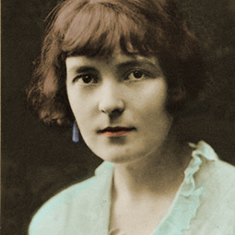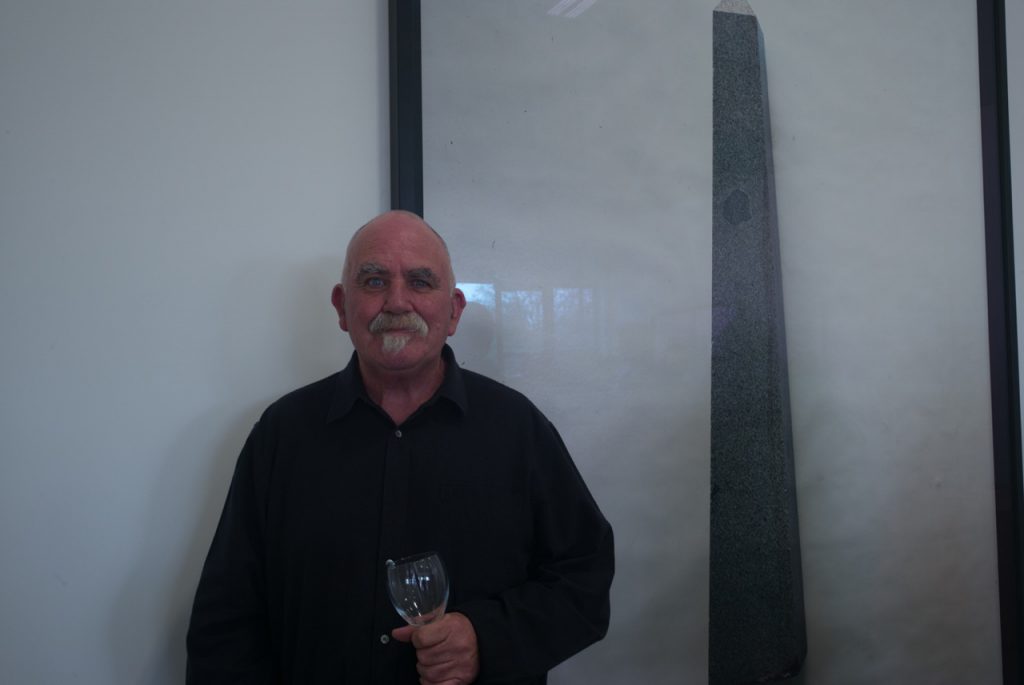This coming week and especially the day of 12 October brings memories of war to the fore. It is the 99th anniversary of the worst day in our nation’s military history when in 1916 at the Bellvue Spur, Flanders, Belgium 846 New Zealand soldiers fell in battle and many more were wounded. A week beforehand 340 of their brotherly complement had also been killed at another nearby site. In the parlance of our national psyche this barbarous set in the theatre of war is named Passchendaele.
We know about it, can talk about it freely, and commemorate it annually.
Yet on that same day but fifty years earlier an even more significant martial event occurred in our emergent nation state that in my view carries much more significance than our sacrifices in Europe.
Let me pause for a moment. As a younger man my governmental duties brought me into frequent contact with the Corps Diplomatique. One evening, late last century, at the French Embassy in Wellington I was talking with a number of their diplomatic staff about a proposal by France to mark the millennium by giving a gift to New Zealand. They wished to provide the services of an artist named Yann Kersale (http://www.ykersale.com/). His medium was lighting. His form was kinaesthetic and he looked for interactions between nature, people and things to affect the lux or the rapidity of lighting reactivity. He came up with two proposals; one to put lighting that interacted with wind and tide around the perimeter of Matiu (Soames Island). The other was to light the Auckland Harbour bridge.
This latter proposal was by far the most aesthetically pleasing but, of course, the ghost of the Rainbow Warrior howled “no way”. A little liquor had been consumed that night and the mask of diplomacy was slightly askew. “Well, I said, at one point “many New Zealanders died for France during two world wars”. “Ah no, monsieur” the reply came, “they died in France, not for France”. NZexit.
But unlike the commemorations of the Great War and subsequent military engagements by our nation’s armed forces what happened at Ōmarunui is still largely unknown in our community at large, and some of the descendants of those who fell find it difficult even to speak about let alone commemorate.
For it was at Ōmarunui that Hau Hau / Pai Mārire converts of largely Ngāti Hineuru were killed or taken prisoner by a force of 200 European Militia under the command of Colonel George Whitmore, and an equal number under the Ngāti Kahungunu leaders Kaiwhata, Tareha, and Rēnata Kawepō.
“Whereas a fanatical sect, commonly called Paimarire, or Hau Hau, has been for some time, and is now, engaged in practices subversive of all order and morality; and whereas the rites and practices of such a fanatical sect, consisting, as they partly do, in murder, in the public parade of the cooked heads of their victims, in cannibalism, and in other revolting acts, are repugnant to all humanity…..
… I will, on behalf of Her Majesty, resist and suppress, by the force of arms if necessary, and by every other means in my power, fanatical doctrines, rites and practices of the aforesaid character; and I will cause to be punished all persons, whenever they may be apprehended, who may be convicted of instigating, or participating in, such atrocities and crimes; and, in Her Majesty’s name, I call on all well-disposed persons, whether Native or European, to aid and assist me herein to the best of their ability.”
New Zealand Gazette, no.14, 29 April 1865, p.129
The following article is based on an essay – one of four – that accompany an exhibition on Ōmarunui by photographer Jono Rotman currently on show (until 5 Nov 2016) at Parlour Projects gallery in Hastings. The other three essayists are Jono himself, Brett Graham, and Peter Ireland and I have utilised excerpts from these artists in this piece.
Brett Graham says of Jono’s work
“Rotman does not take sides, and presents only the photographic residue of an event that took place 150 years ago. An event that has played its part in creating the ‘natural order’ of our condition in contemporary Aotearoa. As with the restorative justice process perpetrator and those perpetrated against are represented unequally side by side, just who is who remains ambiguous. The ruptured obelisk, a broken shard of evidence, serves as a reminder that the event has not been forgotten or forgiven. And perhaps a suggestion that the remnants of such events are real, and continue to fill our prisons and psychiatric hospitals. It is the natural order of things, unless we have the audacity to change them”
I am no artist. I am a political activist ethnographer. I do take an audacious stance, intending to change the order of things rather than to describe or illustrate them.
There are six works presented in the Ōmarunui exhibition five being of glass-plate negatives from the Alexander Turnbull Library. Four of these are portraits, including one of the man who led the settler militia (George Whitmore) and portraits by Samuel Carnell of three of the chiefs involved in the attack – Renata Kawepo, Karaitiana Takamoana, and.Tareha Te Moananui. The portrait of Tareha is actually a photograph of a painting by Gottfried Lindauer which was photographed by Carnell. It’s a photo of a photo of a painting.
The sixth image is the only one not of a negative.
Rotman explains
In 1916, on the day of the 50th anniversary of the Ōmarunui events, veterans unveiled a memorial. The focal point was an eight-foot granite obelisk that was deliberately knocked off its pedestal many years later in the 1990’s. Photographing this obelisk—a corroded and prone power symbol—enables an exploration of the idea that violent events are not contained or neutered by the passage of time. Rather, they reverberate in the present.
The obelisk was toppled by protestors in 1990. A decade earlier on the eve of Waitangi Day I myself assaulted this object with a sledgehammer the mark of which is still visible. I failed. It nearly threw me off. I took this as a tohu, a sign, and it gave me cause to reflect and eventually to change my mind about these matters. I outline these thoughts in a comprehensive earlier blog on this site (https://www.nzedge.com/magazine/mahi-aroha-3/).
So Jono Rotman’s suite of portraits and other powerful images relating to the Battle of Ōmarunui demonstrate the power of art to touch our souls and unleash our emotions. Many locals are possibly familiar with most of these images. However, curated as they have been by Jono they have become liminal, eerie transformed negatives illustrating unfamiliar detail and perspective.
They refer to a transformational time in the emergent nation of Aotearoa New Zealand when Māori began responding to British imperialism and were betwixt and between, conjuring up new rituals, finding a new order of things, and being neither quite one thing nor t ’other.
Revived by dint of the Treaty process the events that took place at Ōmarunui in October 1866 are almost as contentious today as they were in 1866. In this tumultuous period of our nation’s development this regional conflict included political and military actions, the consequences of which emanate in the present.
The Ōmarunui Exhibition surfaces them all. It invites us to see the complex layers of history; even to consider contemporary geo-political activities wherein monuments are destroyed and dominant narratives are revised and rewritten. It draws us into a dialogue that helps move us past the binary propositions of good and bad, rebel and loyalist, terrorist and patriot.
As uncomfortable as it may be this is actually a required dialogue of love – he kōrero aroha. It seeks to squeeze the festering historical pus of a century and a half of grievance and hurt out of the tribal corpus. With decaying matter removed from our wounds – and there clearly are wounds – the living flesh is encouraged to regenerate and reconnect. This brings fresh vitality to our familial relationships – in a word, whakawhanaungatanga.
Ōmarunui also gives lie to the stupid proposition that somehow Māori have been privileged by the Treaty. The clear fact of the matter is that the Treaty has cost Māori dearly. The Exhibition reminds those of us Pākehā who are resident in Hawke’s Bay that we were intentionally invited here by the region’s rangatira and that our Treaty partners have stood side by side with us for over one hundred and fifty years with a variety of outcomes for both Māori and Pākehā.
These seminal Māori partners were prominent Kahungunu rangatira who formed a Treaty partnership with McLean and Colonel Whitmore, among others, as representatives of Her Majesty Queen Victoria. These rangatira were Ihaka Whaaka (Ngāti Rakaipaaka), Pitiera Kopu (Ngāi Te Apatu), Tareha Te Moananui (Ngāti Pārau), Renata Kawepo (Ngai Te Upokoiri), Karaitiana Takamoana (Ngāti Te Whatuiapiti), Henare Tomoana (Ngāti Hawea) and Te Hapuku (Ngāti Te Whatuiapiti).
The respective parties involved in the conflict at Ōmarunui held differing and different views then as to some extent their descendants still do now.
A number of the people of Ngāti Matepu, Ngāti Mahu, Ngāti Tū, Ngai Te Ruruku, Ngāti Kurumokihi and Ngāti Hineuru carry a great pain as a result of what they see as being the consequences of Ōmarunui – indeed it is almost visceral as if the events happened yesterday.
There has been a degree of reluctance to talk openly and frankly about exactly what occurred and why it happened. This may reveal uncomfortable but necessary truths and address – as Sebald puts it
“crucial questions that arise when communities must heal from self-inflicted wounds, not the least being that of who is allowed to claim the mantle of victim” (W.G. Sebald’s On the Natural History of Destruction)
Historical narratives start from a position. In the instance of this essay the stance is that of Ngāti Pārau. We don’t own the only view but it is important to express ours. Semiotics reveal that one of Pārau’s symbols is that of kaokao, the armpit, a colloquial intimation of martial prowess consistent with the hapu’s tradition of intergenerational military service.
The Pārau perspective is that Ōmarunui is was a demonstration of tino rangatiratanga under the tikanga of ringa kaha – force of arms.
However no matter how much we focus on our collective actions as a unified nation in wars against others we cannot escape the uncomfortable truths of our own military history when we differed with one another. Nor should we demonise the respective parties and players.
Louis De Bernieres asks
Where does it all begin? History has no beginnings, for everything that happens becomes the cause or pretext for what occurs afterwards, and this chain of cause and pretext stretches back to the Palaeolithic age, when the first Cain of one tribe murdered the first Abel of another.
All war is fratricide, and there is therefore an infinite chain of blame that winds its circuitous route back and forth across the path and under the feet of every people and every nation, so that a people who are the victims of one time become the victimisers a generation later, and newly liberated nations resort immediately to the means of their former oppressors. The triple contagions of nationalism, utopianism, and religious absolutism effervesce together into an acid that corrodes the moral metal of a race, and it shamelessly and even proudly performs deeds that it would deem vile if it were done by any other.
Louis De Bernieres (2004) “Birds Without Wings”. United Kingdom, Secker and Warburg
In comprehending the consequences of Ōmarunui it is important to as accurately as possible learn what happened, come to terms with it, and move forward. This requires a willingness to evacuate entrenched positions and look at events from different perspectives: a preparedness to humbly walk in one another’s shoes rather than to arrogantly step on toes.
In line with the ambiguity and paradox that underlie the events of 12 October 1866 Jono Rotman’s efforts to foster insight along the pathway to peace and resolution through this Exhibition have not been without mixed messages and unclear response to his proposition. Indefatigable, the inner artist persevered and he now presents us with tangible artefacts. How we deploy them is up to us.
We are starting the journey. On Wednesday 12 October 2016 we will gather first at Ōmarunui in respectful prayer and then journey to Herepoho and thence to Te Harato with our fellow hapu.
Tihei Kahungunu, tihei Hineuru, tatau tatau e.
























